Dateline – January 2020 – Lewisville, Texas
Sparring is a big part of mating season for male White-tailed Deer. Bucks use antler dueling as a way to size each other up and establish a dominance hierarchy. These contests can be ceremonial or deadly serious, depending on how closely matched and determined each buck is.
The forest and undergrowth were dense in the place I chose for the trail camera survey conducted in support of this article. As a consequence, the feisty bucks in this neck of the woods sought out rare small clearings for their sparring contests. The results were arena-style cage matches between the two dominant males in this part of the river bottoms, and my trail camera had a front row seat.

Over the course of the survey, the area’s two biggest bucks confronted each other a number of times. Their contests were always intense.

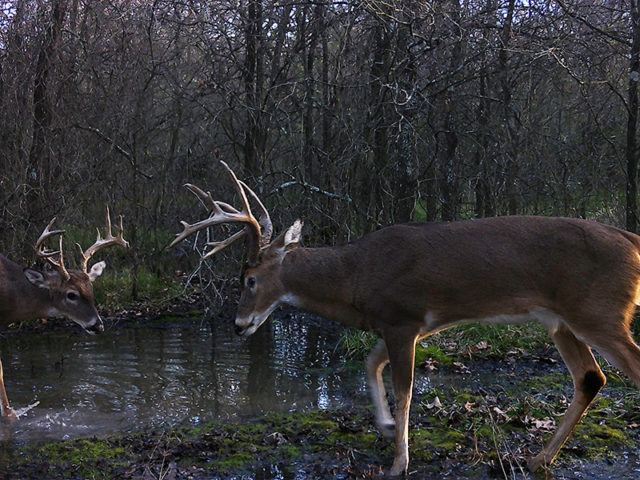

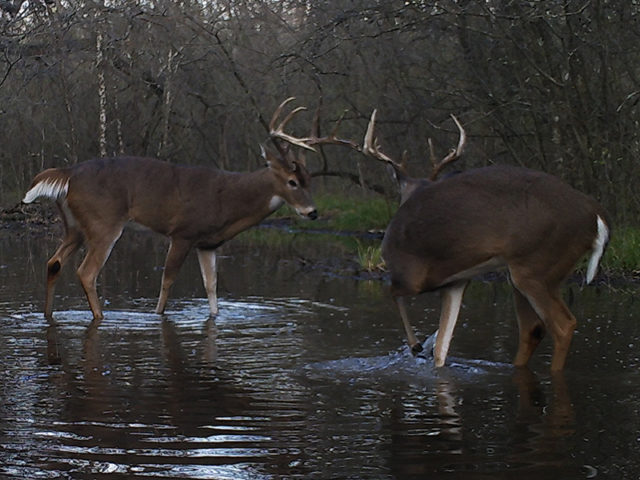





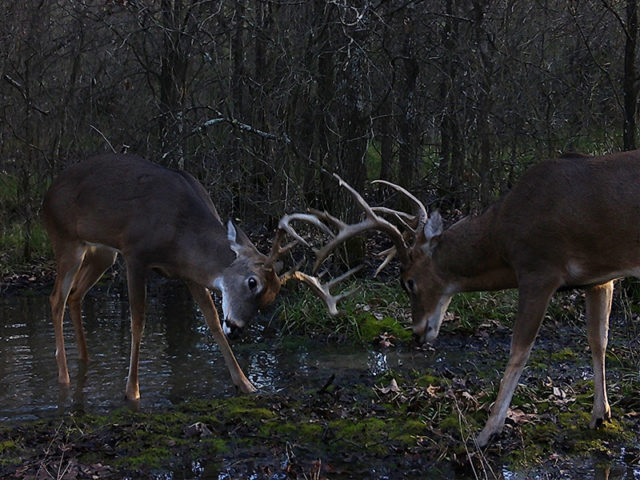







Lesser males would occasionally entertain the idea of engaging one of the dominant bucks, but their commitment was always half-hearted and they deferred readily. Instead, the less dominant bucks often preferred to stand off to the side as spectators, watching with great interest as the bigger bucks sparred.

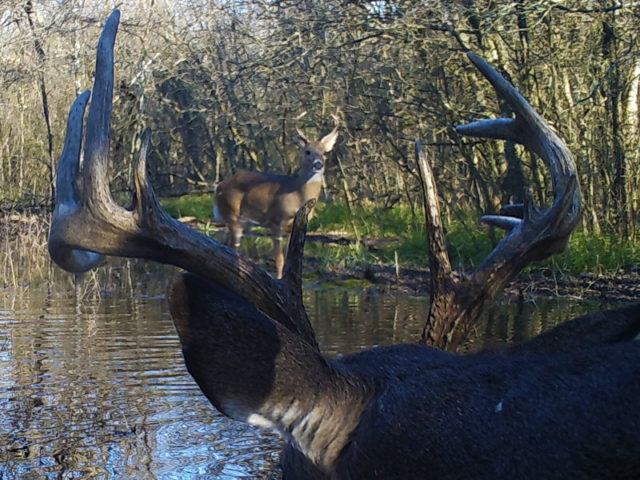









The desire to participate remained strong in the younger bucks, however. The smaller males sometimes played at sparring with each other in an effort to practice and polish their skills. One even engaged in a brief match with his own reflection, as seen in the shallow pool of water he was standing in.

He has just noticed his own reflection in the pool of water



Scent marking is another important aspect of life as a White-tailed Deer. Whitetails are equipped with several glands to support this behavior. The metatarsal, tarsal, and preputial glands are located on their hind legs and rear torso. On the deer’s head and face you will find the preorbital, forehead, nasal, and salivary glands. Deer use these scent glands and the odors they produce to communicate with each other.
Whitetails distribute scent markings in a number of different ways, including rubbing. I believe that is what is going on in the following pictures. Some of the deer appear to be leaving scent—either via their nasal or salivary glands—and others are investigating the markings. Whatever the case, these seemingly ordinary and unremarkable branches remained of great interest to all deer passing through these bottomlands for the entirety of my trail camera survey.




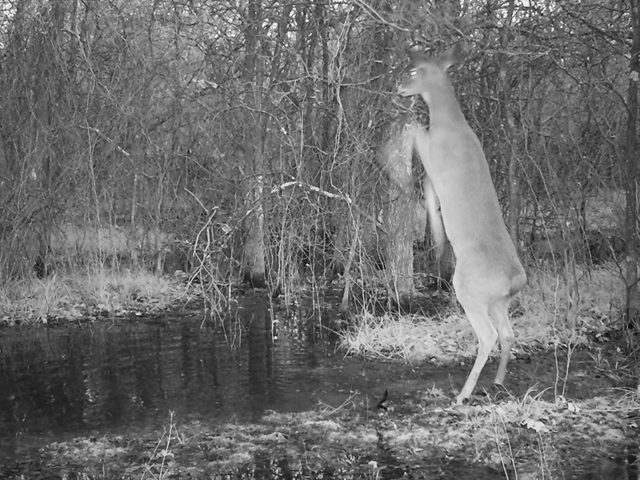


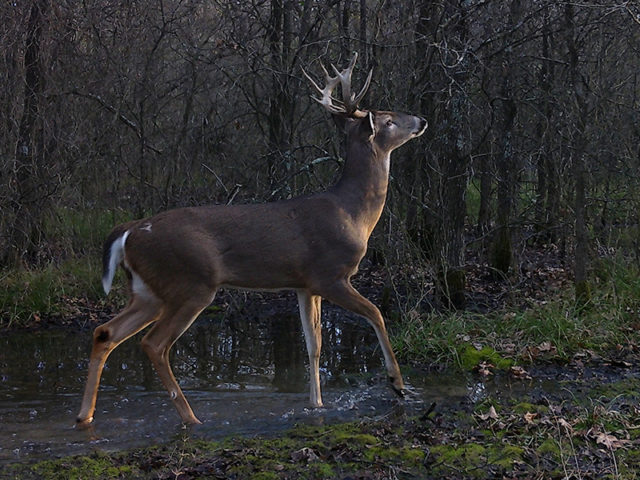


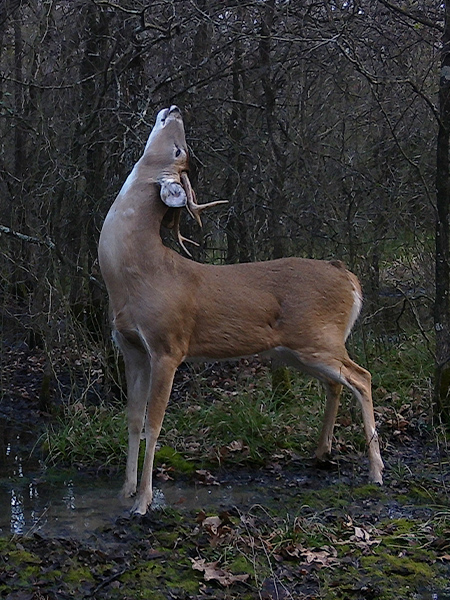
in this one particular spot



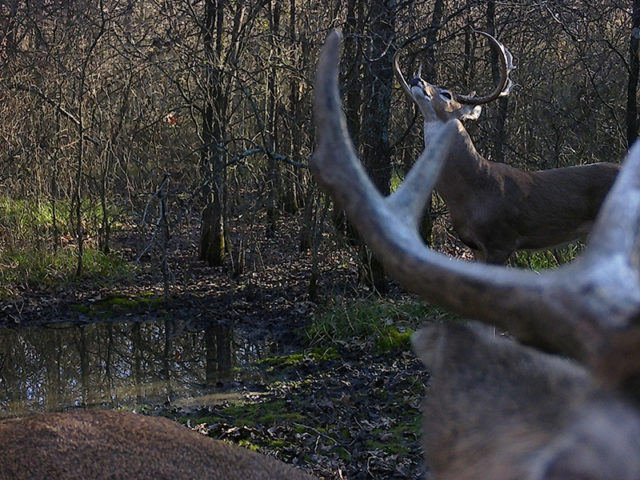
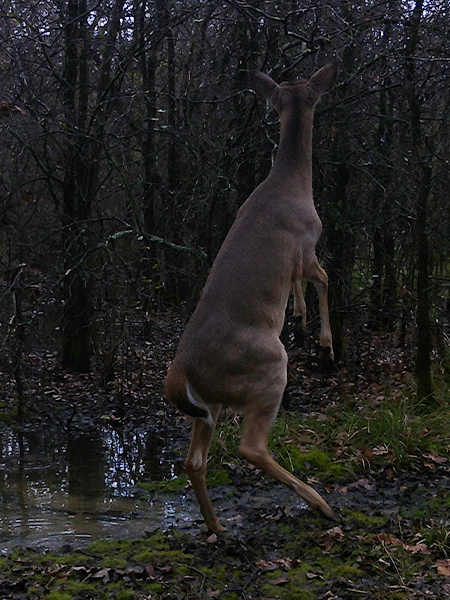








Chris, you are so good at this kind of education. I used to think that deer were pretty boring, but no more!
I really enjoy all the info you present, especially the photos, and love your writing style, too.
Thanks for sharing the wealth of knowledge you possess.
Thanks, Lola! Glad you enjoyed it!